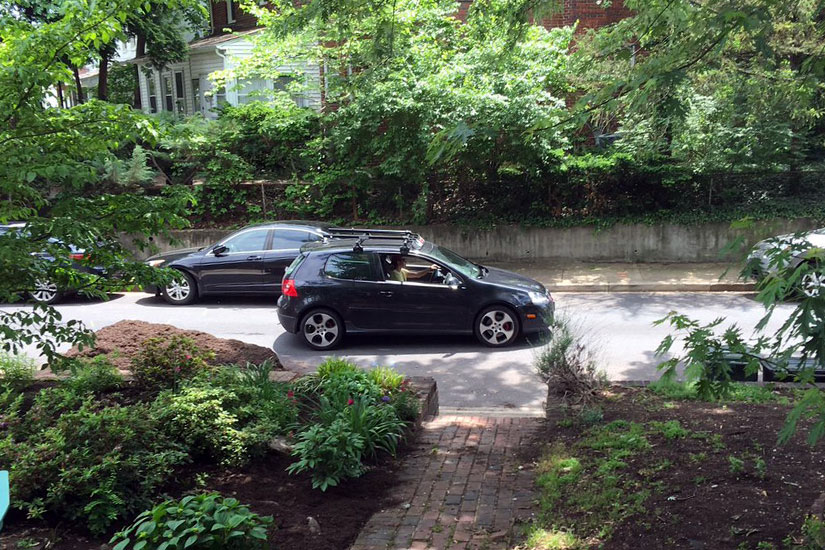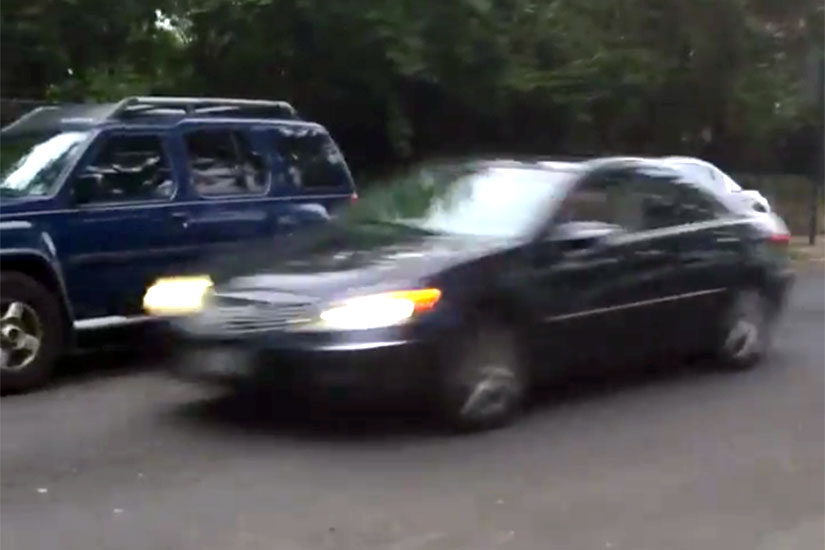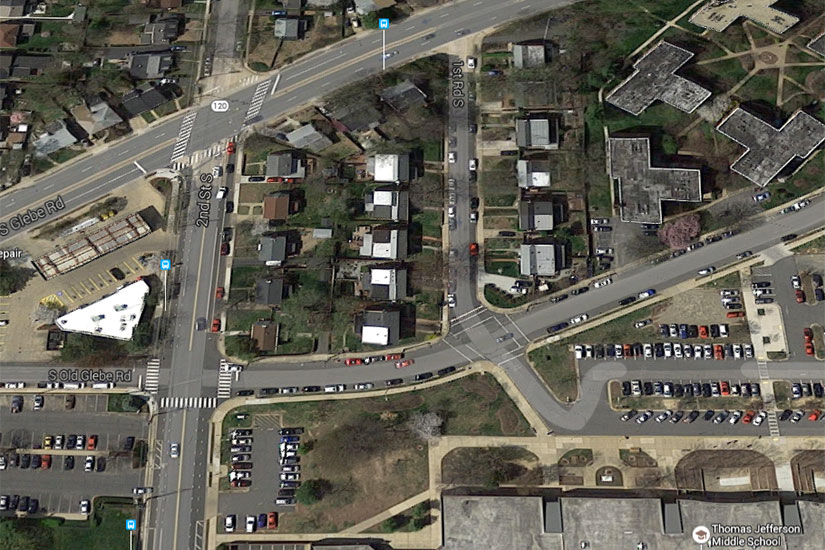In past years, Arlington has been ranked as having some of the worst drivers in the nation. That doesn’t surprise Brian Meenaghan, who has started a Twitter account to document what he views as a never-ending parade of bad drivers on his block.
Meenaghan, an Arlington Heights resident, started the Twitter account @BadDriversof1stRdS at the end of April. The account focuses on the worst offenders on the 3600 block of 1st Road S., a one-way street located in a high traffic area around S. Glebe Road, Route 50 and the Thomas Jefferson middle school and community center.
“I started this account as a cathartic thing because we’ve had a lot of frustrations on our little block. We’re about 400-450 feet long as a block and we dead end at a middle school,” said Meenaghan. “We have people whipping up this block and people coming the wrong way from the middle school. Because of the oddity of the exit for Route 50 around Glebe Road, we also have a lot of people turning around in driveways and going back up the wrong way, trying to go back to 50.”
Meenaghan’s main concern is drivers going the wrong way on the one-way street (traffic is supposed to only flow from S. Glebe Road to Old Glebe Road). From cars to school buses and even Metrobuses, Meenaghan has caught all types of drivers driving the wrong way or speeding — or both — on the narrow street. Photos and video posted to the Twitter account document the broken traffic laws. (See some of the tweets, below.)
“I work downtown and I’m not here physically during the day all that much and I personally see three or four people turning around every day. I’m probably outside maybe 45 minutes to an hour before dinner with my daughter and I see in just that short amount of time a lot of people going the wrong way,” said Meenaghan.
The Twitter account is a joint venture with his neighbors, who often supply the photos he uploads to the website. Meenaghan said he and his neighbors have been trying for years to convince Arlington County to implement traffic calming measures on the block.
“My neighbors are all very involved in this,” said Meenaghan. “I’m not here that much so I’m not here to take a lot of these pictures. You miss a lot of them because they happen so quickly. Probably six of my neighbors have given me photos over the last couple of weeks. It’s kind of a group-wide effort.”
Part of the impetus for the effort is that the block is now chock full of children.
“We now have 15 kids on this block. There are only 23 houses and there are 15 kids under the age of 10. There have been five kids born in the last six months,” said Meenaghan. (One could perhaps see the block as a microcosm of the challenges with burgeoning enrollment facing Arlington Public Schools.)
Along with the kids living on the block, the presence of Thomas Jefferson Middle School at the end of the block means that there is a constant stream of kids on the block during the school year. It’s only set to become busier, with continued growth at the middle school and the construction of a new elementary school on the middle school’s former parking lot.
Meenaghan feels that the persistent speeding and wrong-way driving represent a tragedy waiting to happen. He says he and his neighbors have been advocating for traffic calming measures on the block since 2012, writing letters to Arlington County but being met by frustration.
Arlington will typically only implement traffic calming — speed bumps and other preventative measures — if a traffic study reveals that the average speed of vehicles driving down a street exceeds the speed limit by a significant margin. The problem with Meenaghan’s block, he says, is that it’s too short and narrow for most drivers to work up the speed to break the 25 mph limit.
Without that, county officials said they would need some other form of documented proof of persistent traffic law violations. That, Meenaghan said, was his final motivation for launching the Twitter account.
“One of the things we were told was that the county didn’t believe there was a problem,” said Meenaghan. “They wanted photographic evidence. This is almost a flippant response to that. Here’s some photographic evidence that’s going to go out into the great wide world. Ultimately yes, we want change.”
This couldn't capture the wrong way aspect of this scene any better! pic.twitter.com/7YnSz3DCsh
— BadDriversOf1stRdS (@BadDrvrsOf1stRd) May 19, 2016
When I leave for work, when I come home from work- Near accidents from people turning around. Hey Mini! Wrong way! pic.twitter.com/BqLYK5M48N
— BadDriversOf1stRdS (@BadDrvrsOf1stRd) May 12, 2016
Zoom! One of these speed demons is going to hit one of the dozen kids on this block or crash into a wrong-way driver pic.twitter.com/8yId4iZ5j2
— BadDriversOf1stRdS (@BadDrvrsOf1stRd) May 12, 2016
WMATA getting in on the wrong-way action pic.twitter.com/OLi4VvV0hw
— BadDriversOf1stRdS (@BadDrvrsOf1stRd) May 1, 2016




